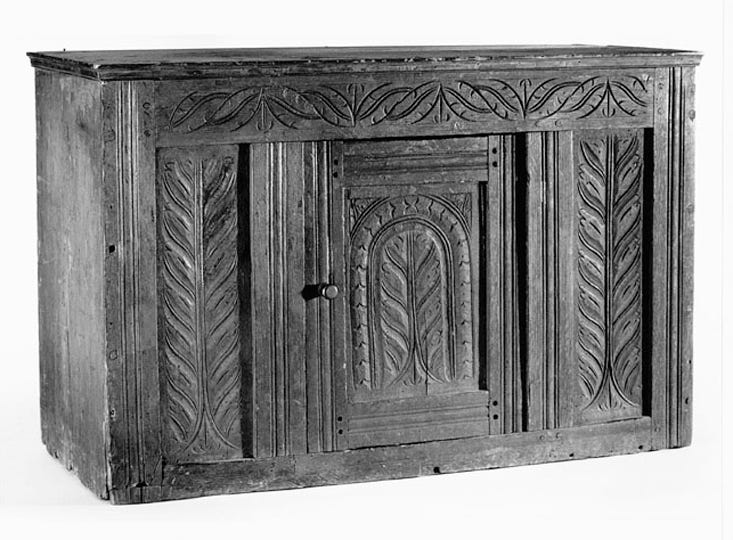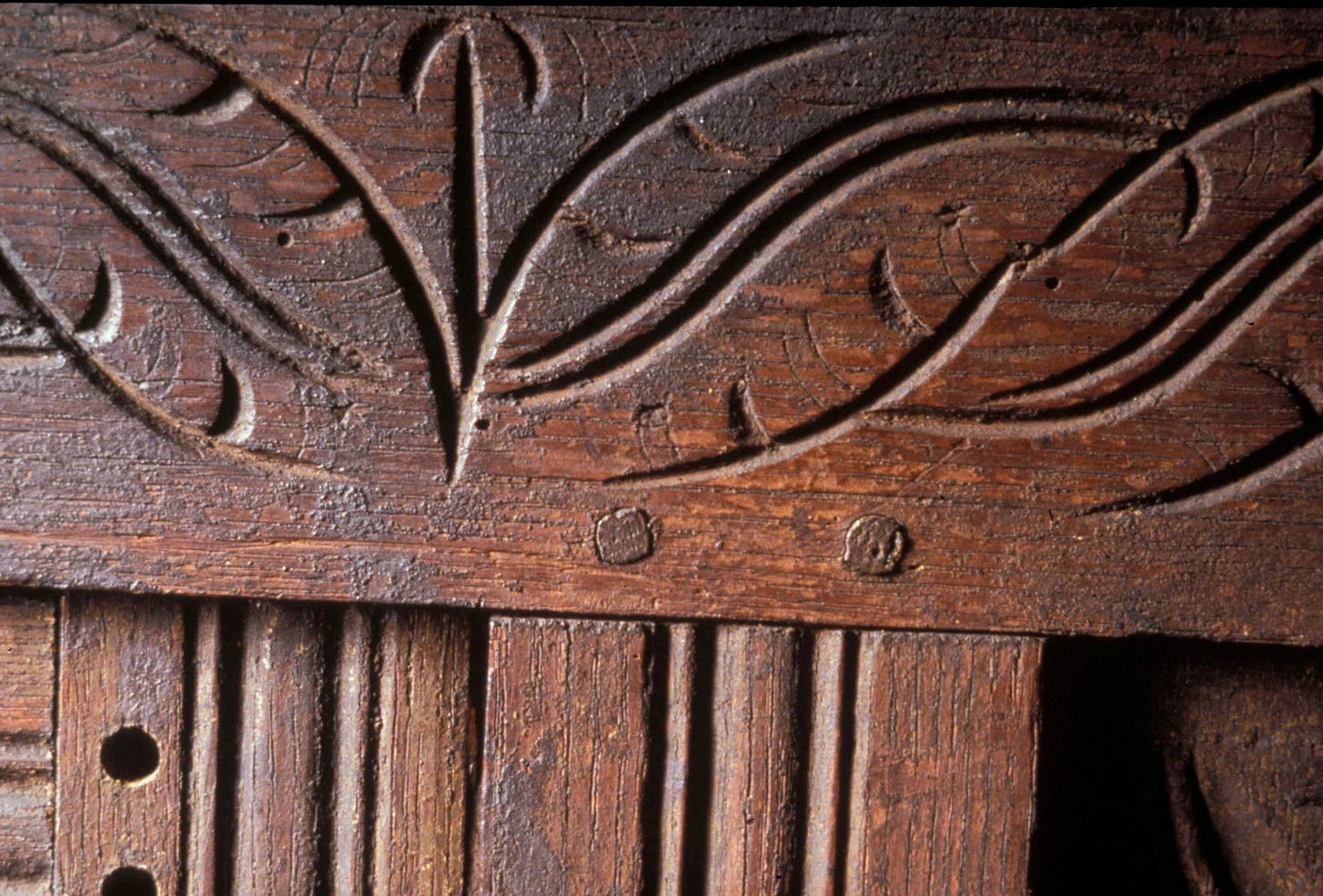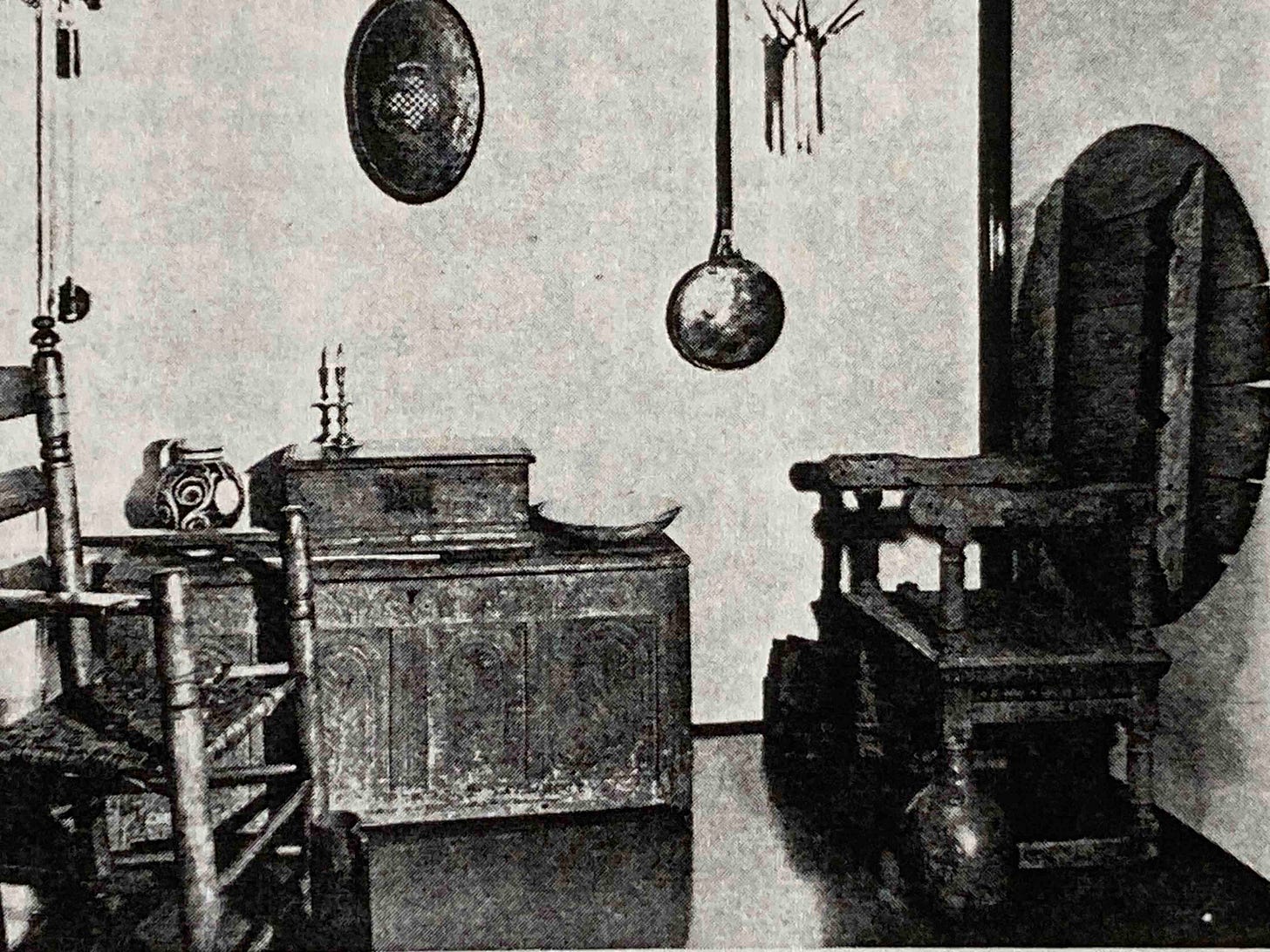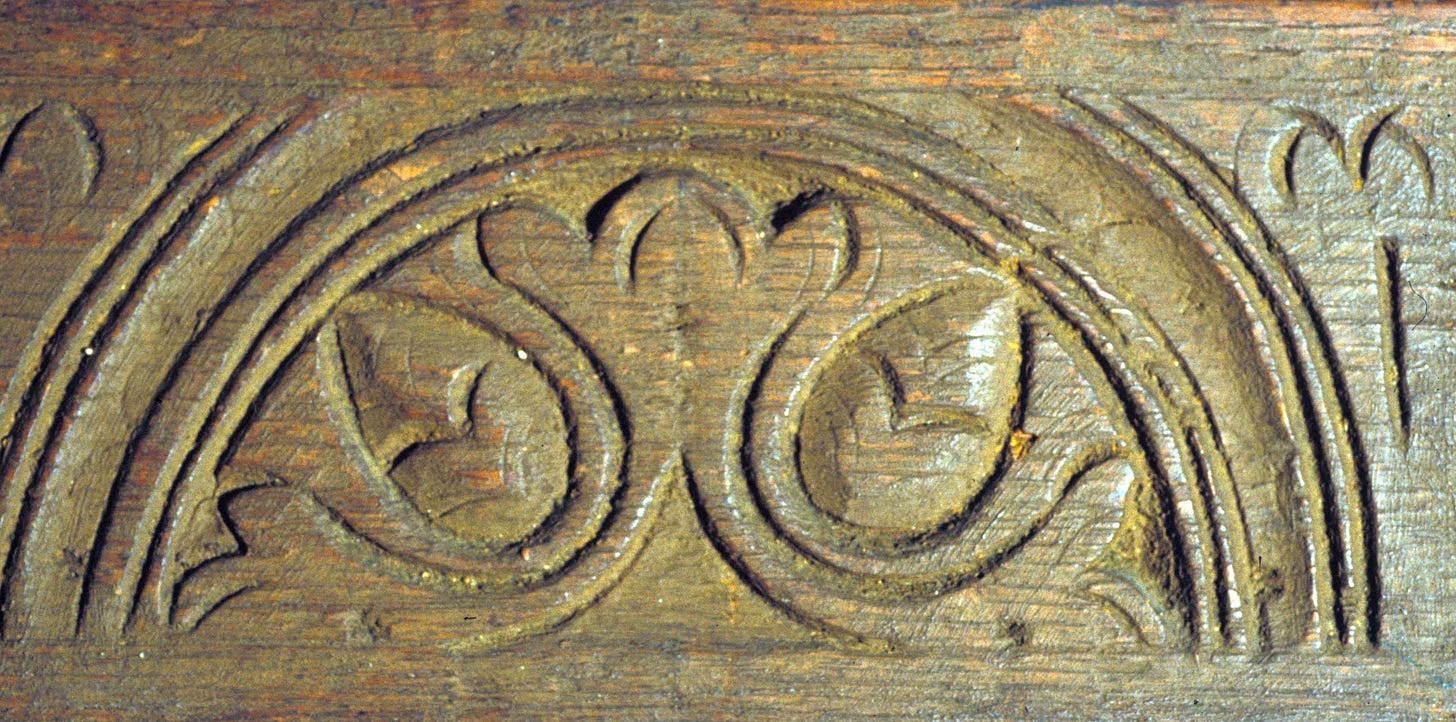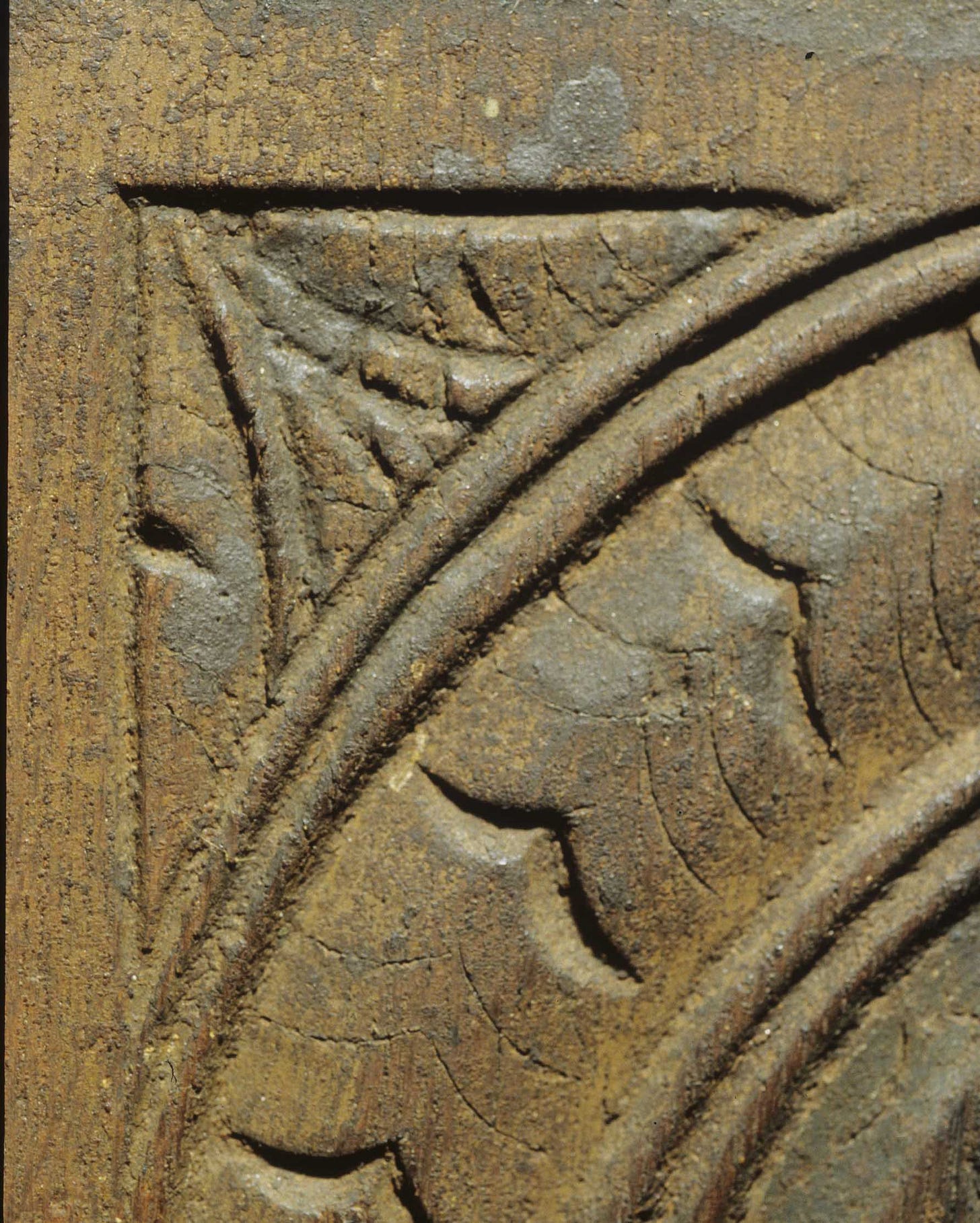[It’s pouring down rain, so I didn’t go out birding today. Instead I sat here & pored over some old research of mine - more about William Savell and his sons John & William. Lots of minutiae here, be aware. This post is too long for email, so you’ll have to click through to view the whole thing. So they tell me, anyway. And I tried to be concise, but it’s a favorite subject that I’ve studied in excruciating detail for 30 years!]
One question I got from my previous post about those boxes from the Savell shop in Braintree was about chronology - which one’s first, that sort of thing. There’s such a small sample - 4 boxes overall - that it’s difficult to say very much about them. But that doesn’t stop me. To illustrate the suggested “who made what?” timeline, I’ll use some of the chests too. {the previous post is here:
It starts with this cupboard at Winterthur (above) - first thing to notice - no lunettes. The top rail has a unique-to-this-group leafy pattern, mostly cut with a V-tool. Some gouge accents. Notice that it’s not symmetrical - it starts at one end and just stops short of the other.
The door panel is the same pattern that appears on all the chests and in part on the desk box. The molding profile - a round with quirks on each side of it - is on a number of the chests - more about that later. One construction detail about Winterthur’s cupboard is that it’s a board case with a joined front attached to it by square wooden pins. There’s a couple other New England pieces that are joined/boarded hybrids like that - but I think those are nailed together.
During the research Jennie Alexander and I did for this study, I ran across a cluttered photo grouping some early furniture forms into one shot - and there I saw a chest with “our” panels. [I don’t remember the book, but this is the photo, I later found it in the magazine Antiques from 1950s - this is from a photocopy.]
I tracked down the photo credit and saw it was part of the Smithsonian Institution collection. So JA & I made an appointment and went off to see it. When we got there they first took us into the office, just to chat about the day’s schedule, etc. On the table was the object file and we saw a photo that showed the chest’s construction - a board chest with a joined front. Our jaws dropped!
That chest’s carving, molding and construction tie it directly to the Winterthur cupboard - AND it has the top row of lunettes that are the same pattern as the joined chests.
One motif that helps us tie the Winterthur and Smithsonian carving together is the spandrel - the triangular area outside the arch of the panels. Here the carver shapes the pattern that he’s outlined with the V-tool and struck with gouges. No flat surface left. Here is the spandrel from the Winterthur door panel:
Below is one of the Smithsonian panels - I think you can see it’s the same treatment, same carver.
Those two objects we attributed to William Savell, (1599-1669) the joiner from Saffron Walden, Essex, England who was in Braintree Massachusetts by 1640. For contrast, at least 8 of the chests have spandrels like this:
Keep reading with a 7-day free trial
Subscribe to Follansbee's Substack to keep reading this post and get 7 days of free access to the full post archives.




